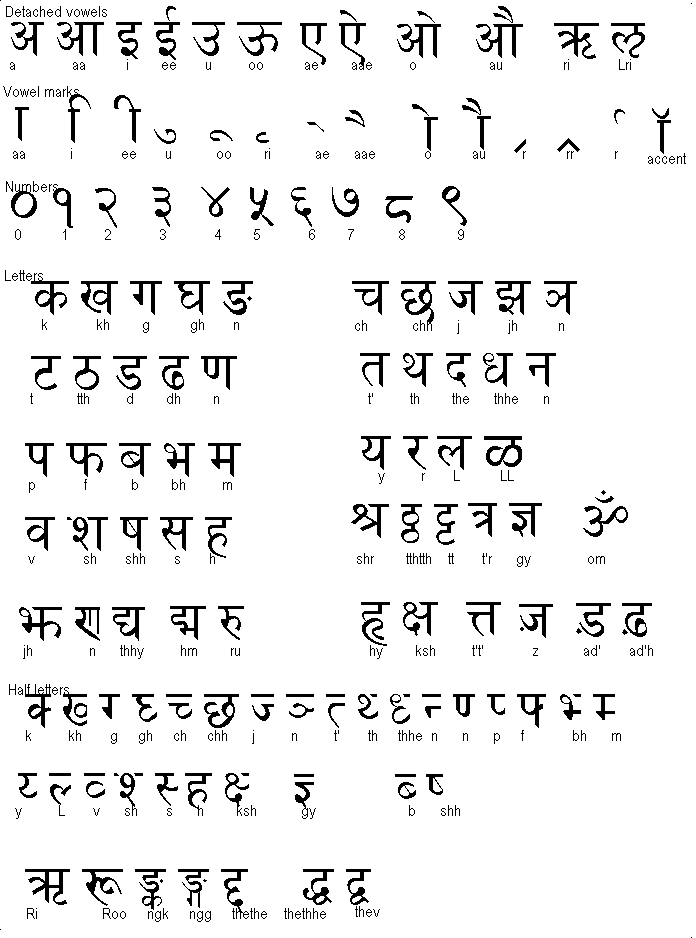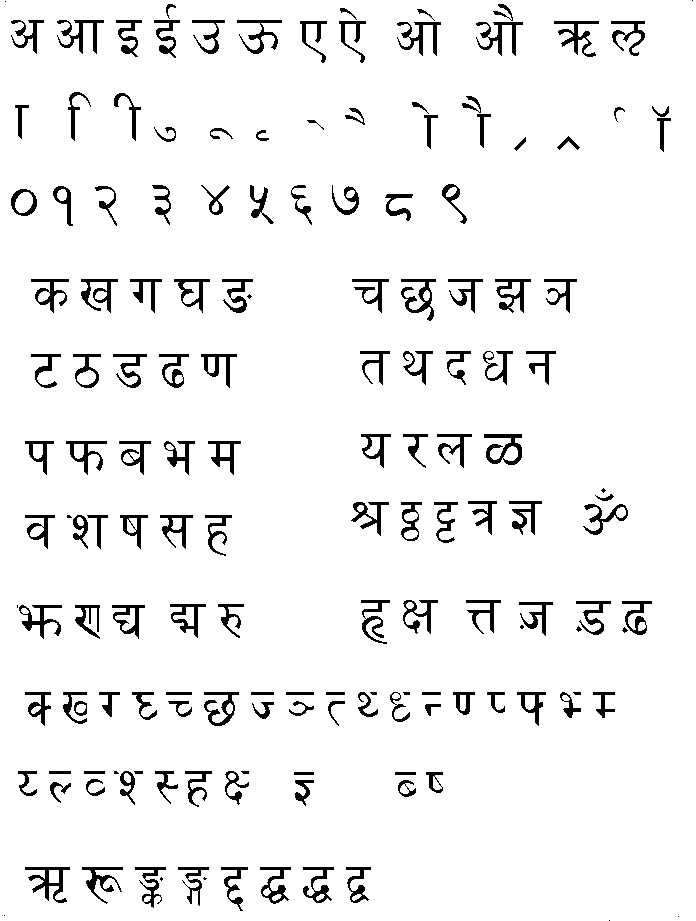
Sanskrit Lesson 1
Many ancient Indian texts on Science and Mathematics were written in Sanskrit. In these lessons we will look at some common phrases. Please write to ukindia@innotts.co.uk if you spot any mistakes or any comments you have about these lessons.
To revise the Sanskrit/Hindi script click here.

and here are some phrases using these words.

The above phrases read :
Bal patthti . Bala patthti. S Chalti . Sa khelti . Ram Sham ch vadte . To vadte . Meera Meena ch namte. Te namte . Amba pachti . Shakha pat'ti . Gaj Aj kutr chalte ? To atr chalt . Ashv , Sinh ch n chalt to davt . To atr aev khadt . Ram Sham Tom ch hasnti .
Here is the script .Make sure you know it by heart . If you take this gif picture and convert it to a bitmap , you can then edit and cut and paste to make your own words in Hindi/Sanskrit.


Please read the very helpful comments by Paul Newman below
It's really a great pleasure to see someone helping to propagate the message
of the greatness of Sanskrit as this has long been a source of great
inspiration and joy to me.
Sanskrit is, though, a language which needs great attention to detail, hance
my initial enquiry. You ask for comments, here are some which may be of
help. I'm afraid this PC setup does not allow me to respond using
ttf-extension files (as presently configured) so I shall have to make do
with transliteration. Hope you don't mind.
I think consistency is of the greatest importance. For example do you
understand the place of sandhi in Sanskrit? I say this because you are
inconsistent very often.
I take a few examples from Lesson 1. You quote 'baalah' correctly, showing
the visarga (h in my transliteration) which indicates pullinga (masculine)
and this is how I would display it. Later on thought, you drop this and just
display the pratipaadika (bare stem). Some authors do this, but I don't like
it, better to be consistent -- one form or the other. Also you do not
indicate linga (gender) of nouns, which must be confusing to students. Later
on you have some simple sentences. 'Baalaa likhati' is perfectly correct,
but preceeding it you have 'baalah pathati' which is incorrect the correct
form is 'baalah pathati' if you split the sandhis (easier for beginners, I
say) and its the same if sandhi is applied. Later on you have 'raama shaama
ca vadatah' (and notice in Sanskrit it should really be raama not raam),
this sentence is wrong. If no sandhis are applied it should be 'raamah
shaamah ca vadatah'. If sandhi is applied then you have two alternatives:
either 'raama shaamashca vadatah' or 'raamashshaamashca vadatah' either is
OK. Here you see your lack of consistency leads to incorrect results.
I hope I have made my point, I could go on as there are many such
inconsistencies on the first page alone, but really there is so much
material to work on it would require a complete revamp of the page to be
totally correct ant to display everything appropriately, and time just
dosen't allow this level of commitment from me.
I hope this isn't too negative. You put such a lot of work into this, I can
see, and really something very productive ought to come out of it. If you
have simple straightforward questions, I may be able to help. I myself
learned at the Bharatiya Vidya Bhavan in London. They have very good
teachers there. Dr Nandakumara, the executive director, and Dr Shastry, the
Academic director, are very able Sanskritists. If you care to approach them
I am sure they will be delighted to help.
I wish you every success with your work
Paul Newman Thank you very much indeed for your comments . At the moment because of time commitments I am going to leave the lessons as they are but may come back to them later. If there are any readers out there who want to volunteer to do the changes please get in touch.
ycrnn21@ucl.ac.uk
Lesson 2 Home